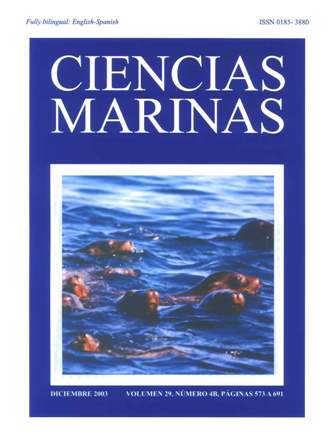Maternal care in the California sea lion at Los Islotes, Gulf of California, Mexico
Main Article Content
Abstract
Behavioural components of maternal assistance in the California sea lion at a small colony in the southern part of the Gulf of California were analyzed and compared between one year with normal environmental conditions (1996) and one influenced by El Niño 1998). The components considered were the frequency, duration, intensity and rate of lactation, and the frequency and duration of the feeding trips. The parameters employed to measure the intensity of the maternal investment were the weight, density and growth rate of the pups. No significant differences were found in both years between the weight of female and male pups, growth rate and body density; when comparing these parameters between the years, no significant differences were found either. In 1996, the daily lactation rate and the intensity decreased while the pups grew, but in 1998 the lactation rate remained constant and the intensity increased. The results indicate that the difference found in 1998 is probably due to the use of an alternative breeding strategy when the environmental conditions are poor. The duration of the feeding trips was significantly greater in 1998 than in 1996 (2.05 ± 0.87 d and 1.3 ± 0.60 d, respectively). For 1996, the estimation of the cycle duration (time of feeding trip + time of assistance in rookery) was 2.07 ± 1.5 d. Two variables were associated with the growth rate of the pups: intensity of lactation and frequency of the feeding trips.
Downloads
Article Details
This is an open access article distributed under a Creative Commons Attribution 4.0 License, which allows you to share and adapt the work, as long as you give appropriate credit to the original author(s) and the source, provide a link to the Creative Commons license, and indicate if changes were made. Figures, tables and other elements in the article are included in the article’s CC BY 4.0 license, unless otherwise indicated. The journal title is protected by copyrights and not subject to this license. Full license deed can be viewed here.

